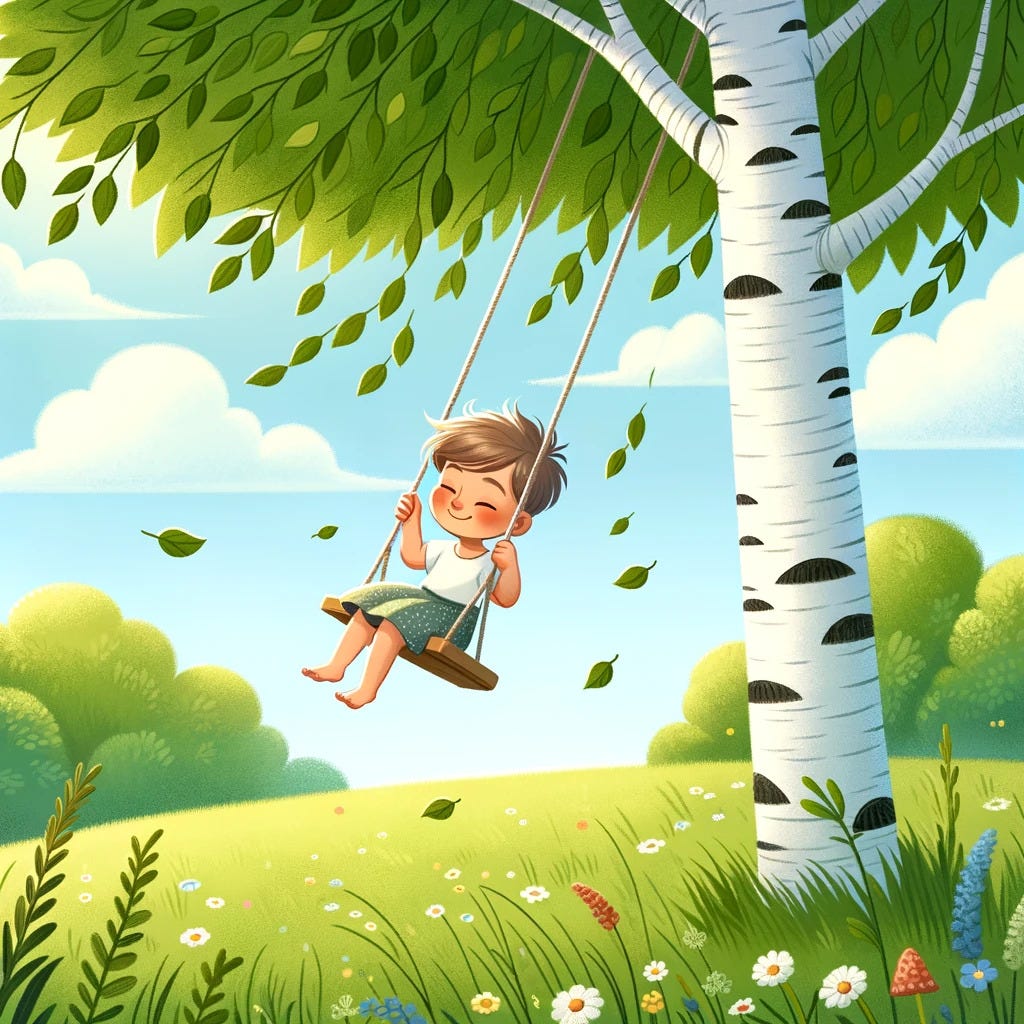Swinging on a Birch Tree
by Lucy Larcom
Swinging on a birch-tree
To a sleepy tune,
Hummed by all the breezes
In June!
Little leaves a-flutter
Sound like dancing drops
Of a Brook on pebbles,—
The song that never stops.
Up and down we seesaw:
Up into the sky;
How it opens on us,
Like a wide blue eye!
You and I are sailors
Rocking on a mast;
And the world's our vessel:
Ho! she sails so fast!
Through its vivid imagery, we can almost feel the poetic firmament of childhood, from the primitive joy of swinging on a birch tree to playing without care when we imagine a birch tree, a state of pure and total freedom. There is excitement for the exploration of the world. Wrapped up in this ideal scenario, we see a child swinging on a birch tree.
As the poem vividly illustrates, life is a constant oscillation, much like the up-and-down movement of a swing. This metaphor beautifully captures the rollercoaster of life, from the carefree sighs of childhood to the complexities and challenges of adulthood. Just like the pendulum of a swing, life is a continuous cycle of ups and downs, a truth that the poem poignantly conveys.
The soft intro, with June snoring in the wind and a trough of silence, lends a sense of peace in the long night. This fragile star symbolizes the time in one's life when our only images are of innocence. Like the unbreaking current of the breeze, like winds and leaf rustlings in the never-ending song of the brook, both those first rhythms—first and forever—in life are unconscious.
As the poem progresses, the rocking motion takes on a deeper meaning. It becomes a metaphor for life's challenges, symbolizing the times when we feel like a child being whirled about in the air. These are the moments when life's vast possibilities and deeper meanings reveal themselves when we have something bigger or grander to live for. The poem's exploration of these themes adds depth and richness to its narrative.
In the same way, the poem itself silences the swinging down that the action of the seesaw automatically incurs. It might represent the struggle, denial, and introspection that can become a part of the aftermath of life's highs. It is the dichotomy of the two poles of all existence: the polarity of joy and sorrow, triumph and defeat, and life. But as the poem hints at, it is this very dichotomy that gives life not just depth but also breadth.
The image of rocky sailors on a mast further sums up the interpretation. This world serves as the barge to carry us, as adults, along a more grounded course where we navigate life's waves and sudden squalls. That fast-sailing ship metaphor speaks to both time ticking away and the invariable change process.
Larcom describes many of the fun-sounding things that children do. Still, her poem offers a delicate portrait of popular humanity. The birch tree is like the tree of life and the human spirit. The rocking motion, up down, up down, calls us to adjust to the changes, to accept that on some, we may bring joy to the very top of the peak and that on others, we feel deeply in the abyss.
In the poem, we are thinking about the cyclical nature of life. There are perfect moments of unequivocal happiness mixed with the pain and intrigue of uncertainty. The message we take home is that life is such a pendulum, a swinging affair in all its great highs and lows.






The pendulum of living life.
Love poems, especially the ones that rhyme!